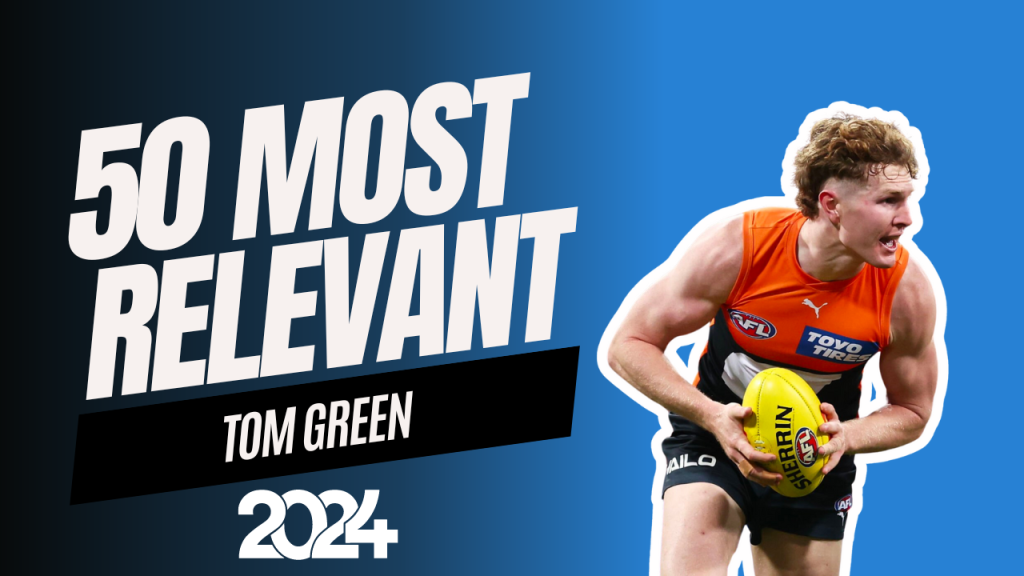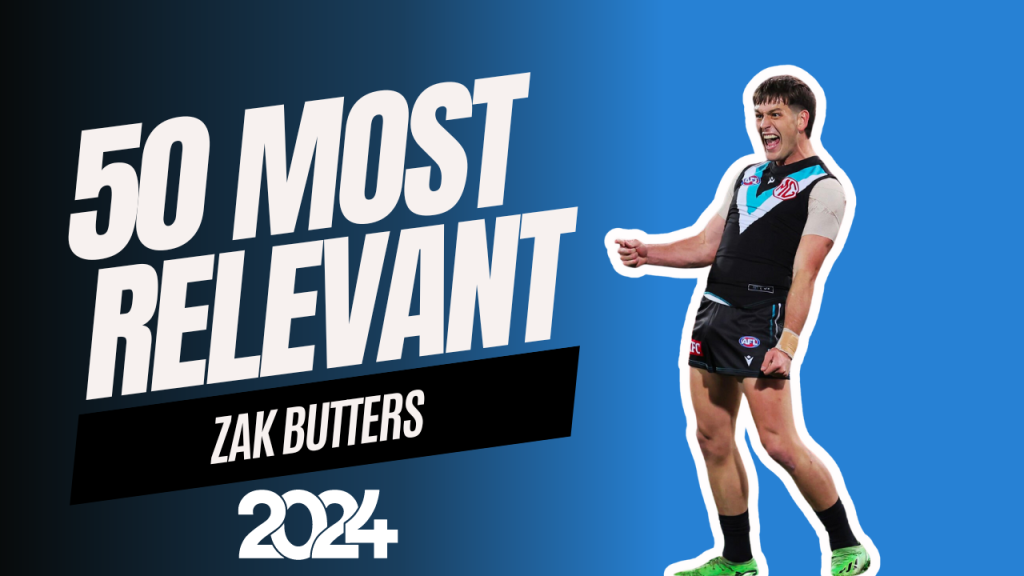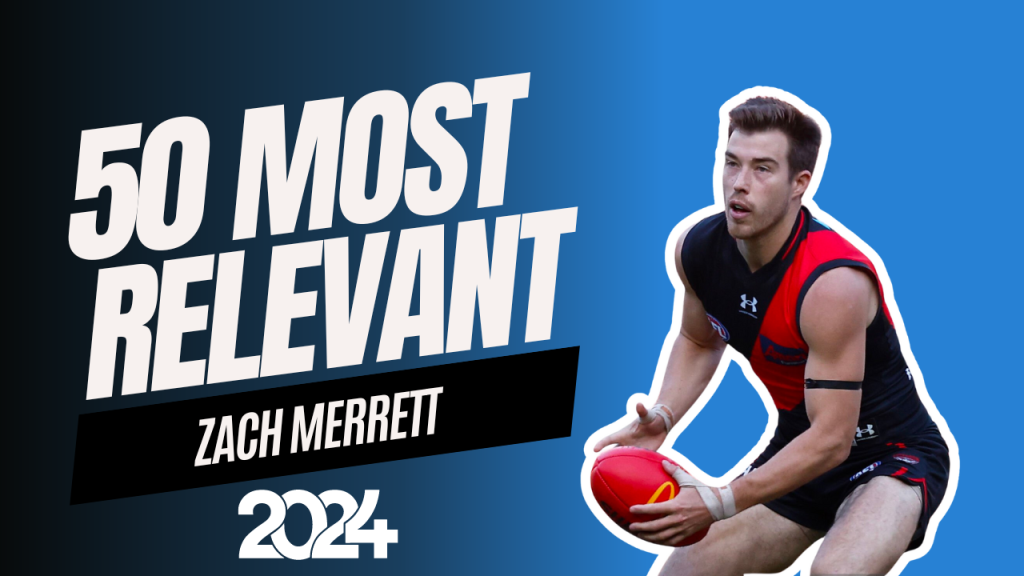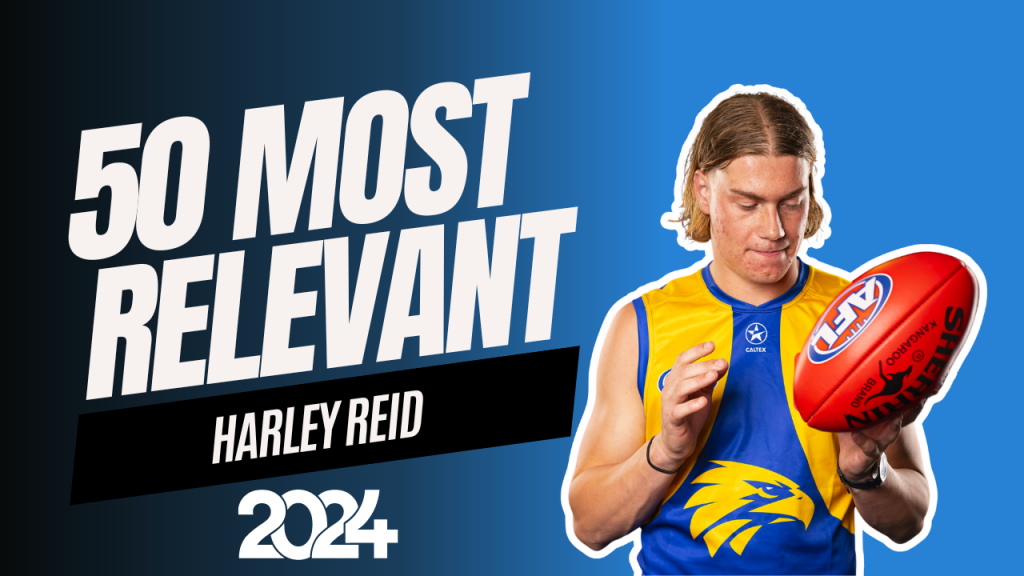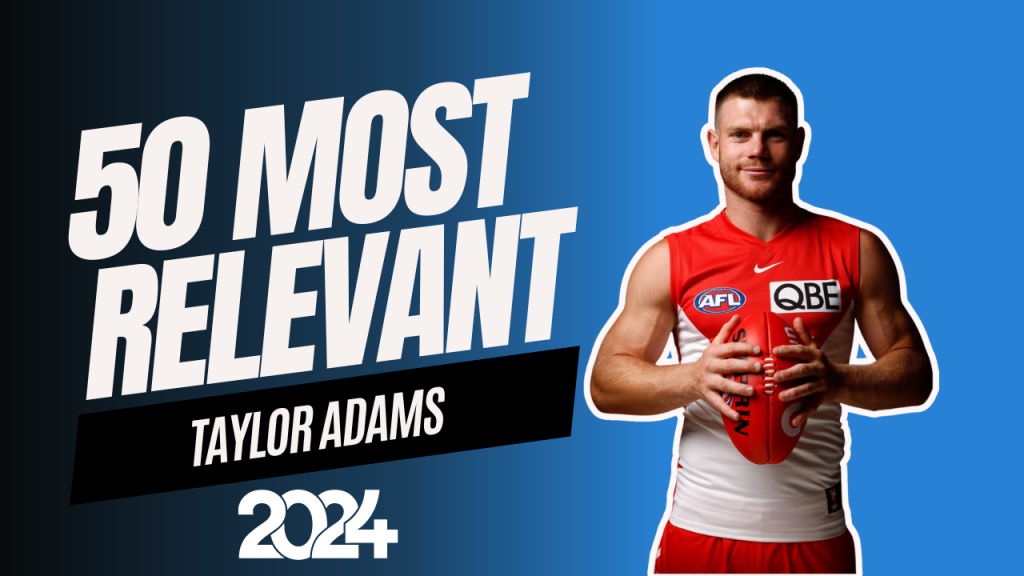Tom Green has become a fantasy football powerhouse in just a few short seasons. We look at the GWS Giants midfielder’s standout 2023 season, his exceptional scoring ability and pivotal role in the midfield. Green is positioned to elevate his scoring to new heights in 2024, but does the early bye create chaos for coaches considering? Let’s discuss that in the 50 most relevant.
Zak Butters’ ascent into the elite echelons of AFL midfielders has fantasy coaches buzzing, especially after his standout 2023 season with Port Adelaide that blended hard-nosed play with top-tier skill. We dive into Butters’ fantasy football prospects, unpacking his potential for both SuperCoach and AFLFantasy amid expectations of increased scoring and the strategic nuances of Port Adelaide’s dynamic midfield lineup.
Discover why Fremantle Dockers’ Caleb Serong is a must-consider pick for your AFLFantasy & SuperCoach lineups in 2023 as we delve into his scoring potential, growth areas, and strategic value ahead of the season. Learn how Serong’s leadership role, fixture advantages, and resilience against tags can elevate your fantasy football strategy, making him a pivotal selection for achieving bye-round balance and maximizing points.
Zach Merrett’s blend of consistency and elite performance cements his status as a top fantasy football option, navigating the strategic depths of selecting a midfield maestro amid the early rounds’ quest for scoring diversity.
Exploring the fantasy football potential of Harley Reid, the West Coast Eagles’ number one draft pick, as coaches navigate the balance between his high expectations and rookie status.
Dive into the fantasy prospects of Taylor Adams as he transitions to the Sydney Swans, examining his value and potential role in your fantasy football structures.
WHY IS HE RELEVANT? Jack Steele stands out as a formidable presence in the AFL, renowned for his hard-nosed, relentless style of play that makes him a pivotal figure for his team. As a midfielder, Steele combines a unique blend of grit, endurance, and skill, making him one of the
Dive into the multifaceted world of fantasy football where Jack Sinclair emerges as a key figure for fantasy coaches, offering a blend of top-tier defence and strategic advantage for the early part of the season. Uncover the intricacies of backline structuring and how Sinclair’s role, especially at Marvel Stadium post-bye, could be pivotal in balancing your team against other premium defenders like Nick Daicos.
Embark on a journey to discover Jeremy Sharp’s hidden fantasy football potential as he gears up for a promising season with Fremantle. This article delves into Sharp’s unique skill set and the strategic advantages he brings, spotlighting why he could be the secret weapon in your fantasy lineup.
Explore the multifaceted fantasy football potential of Sydney Swans’ midfielder Errol Gulden as we delve into the complexities of his role in a dynamic Sydney lineup and strategize around the team’s early bye week.
